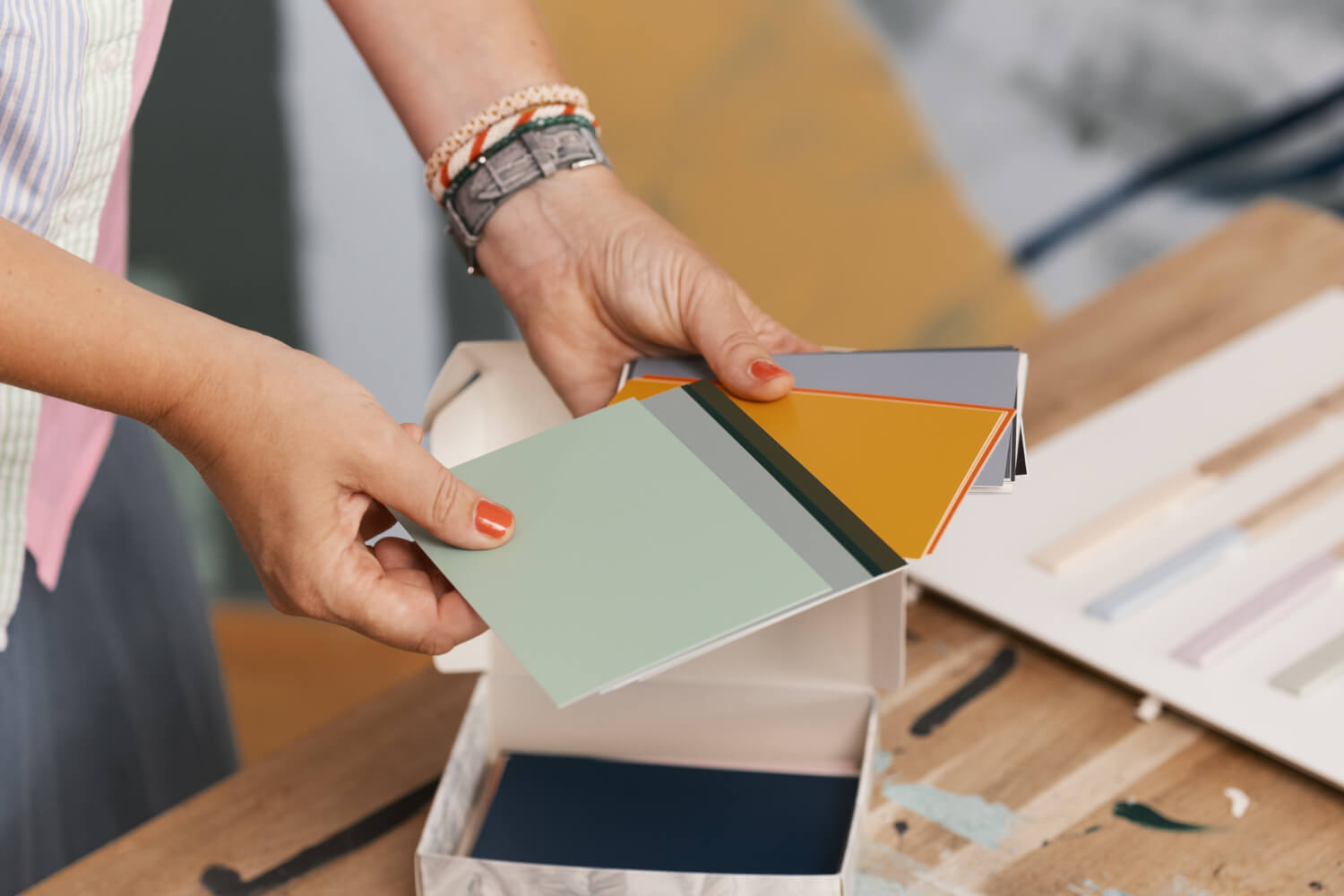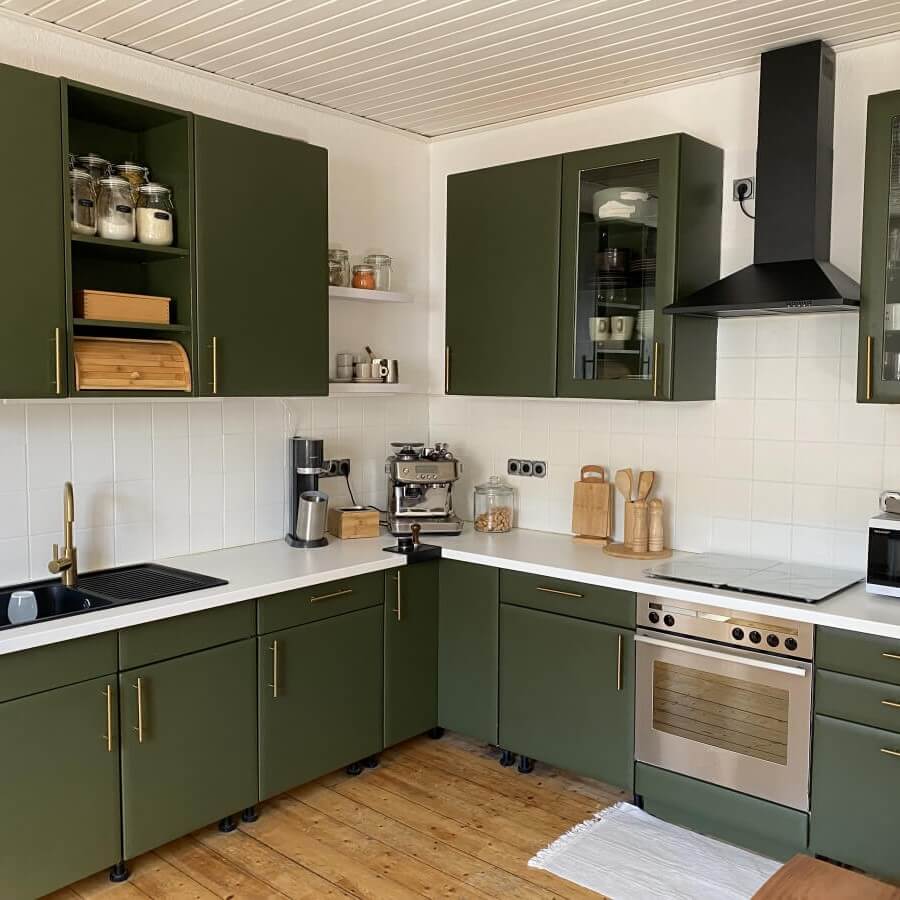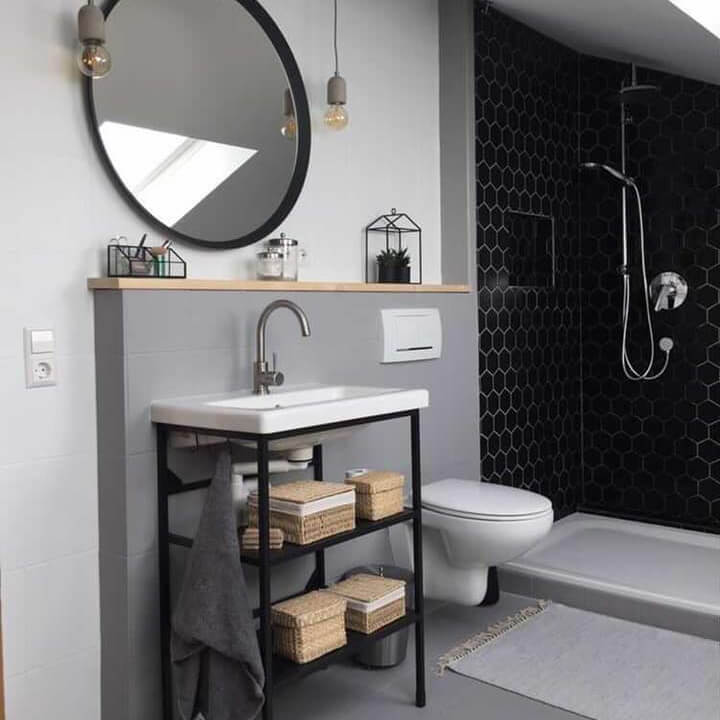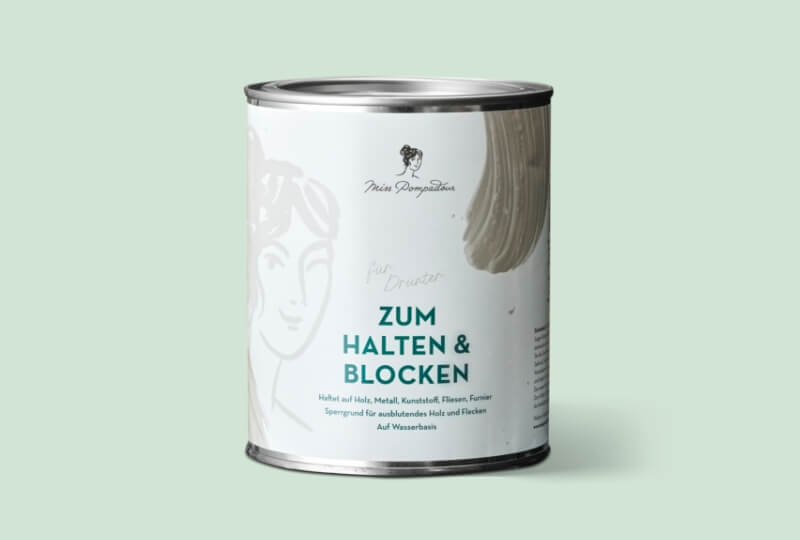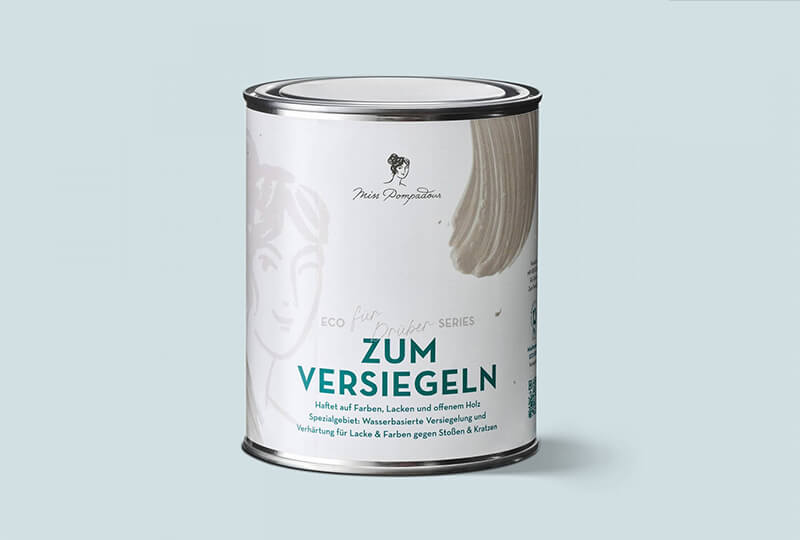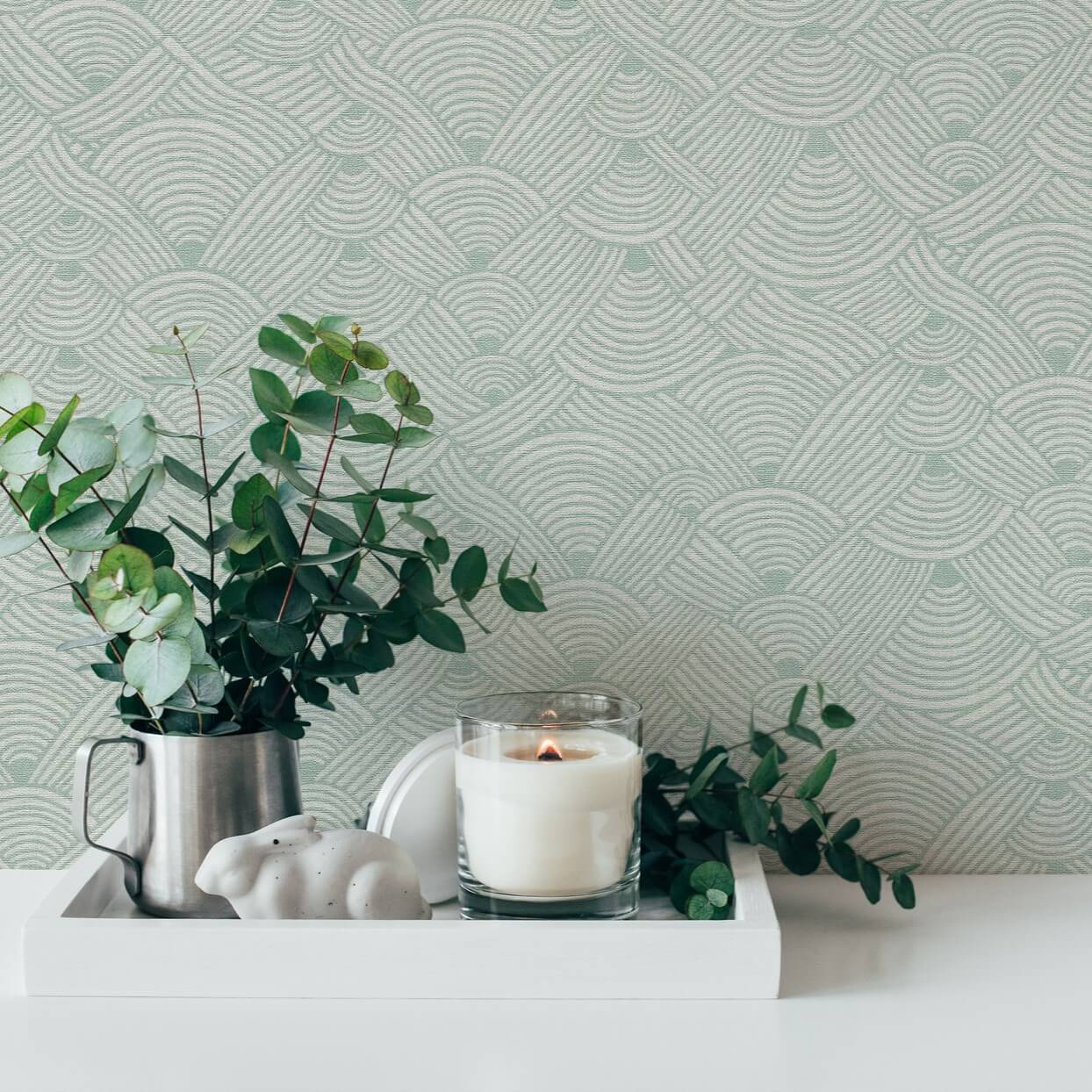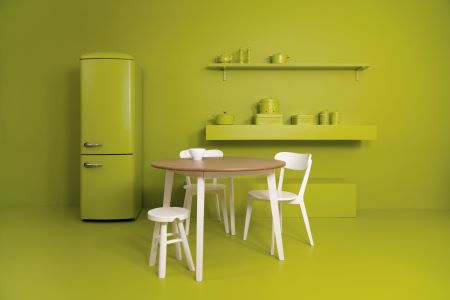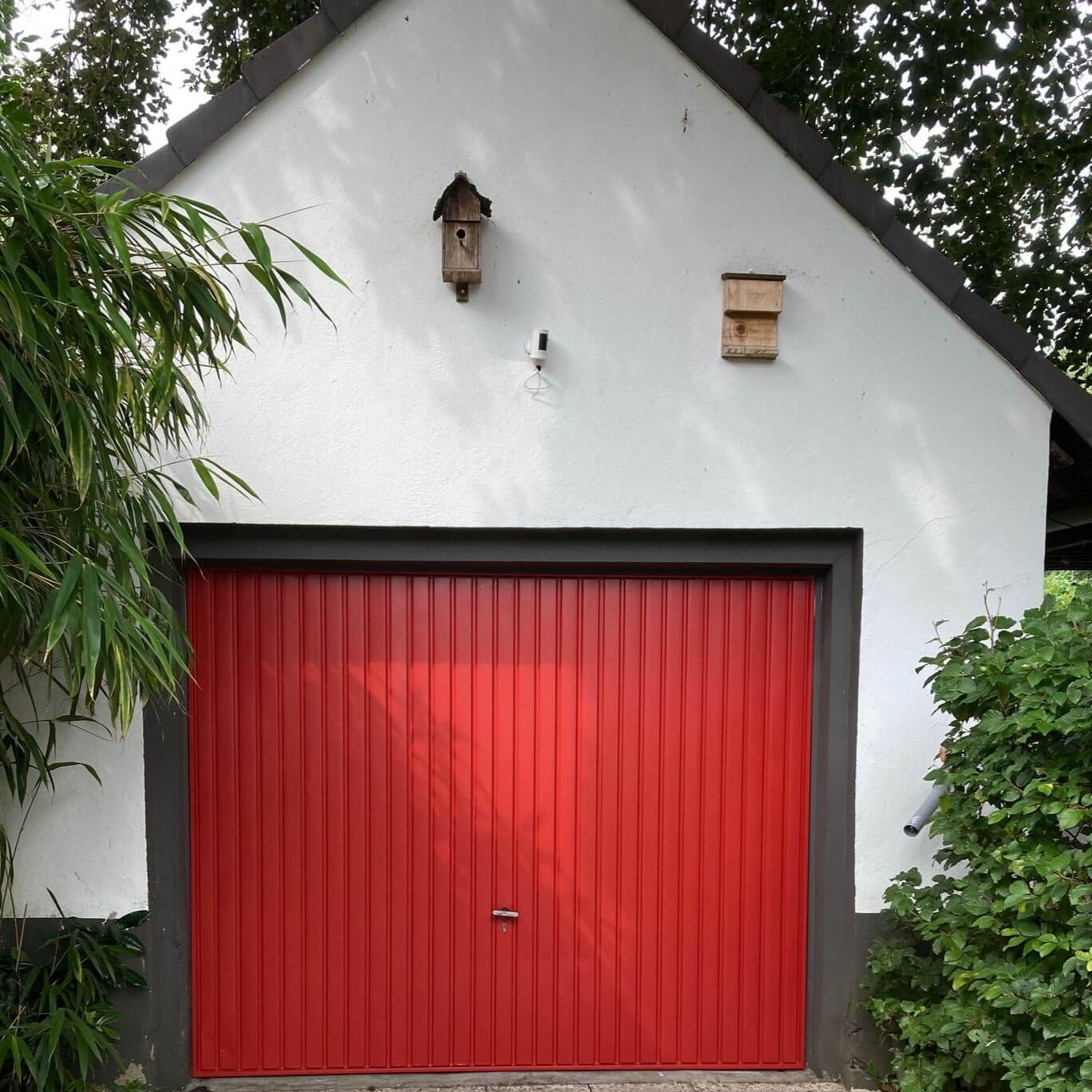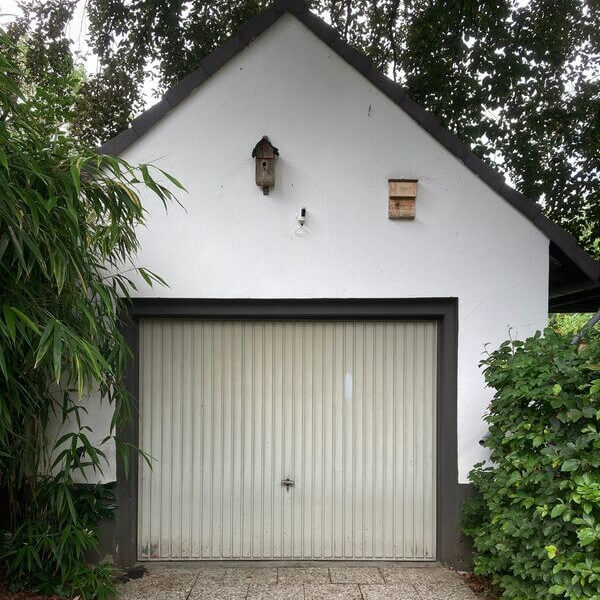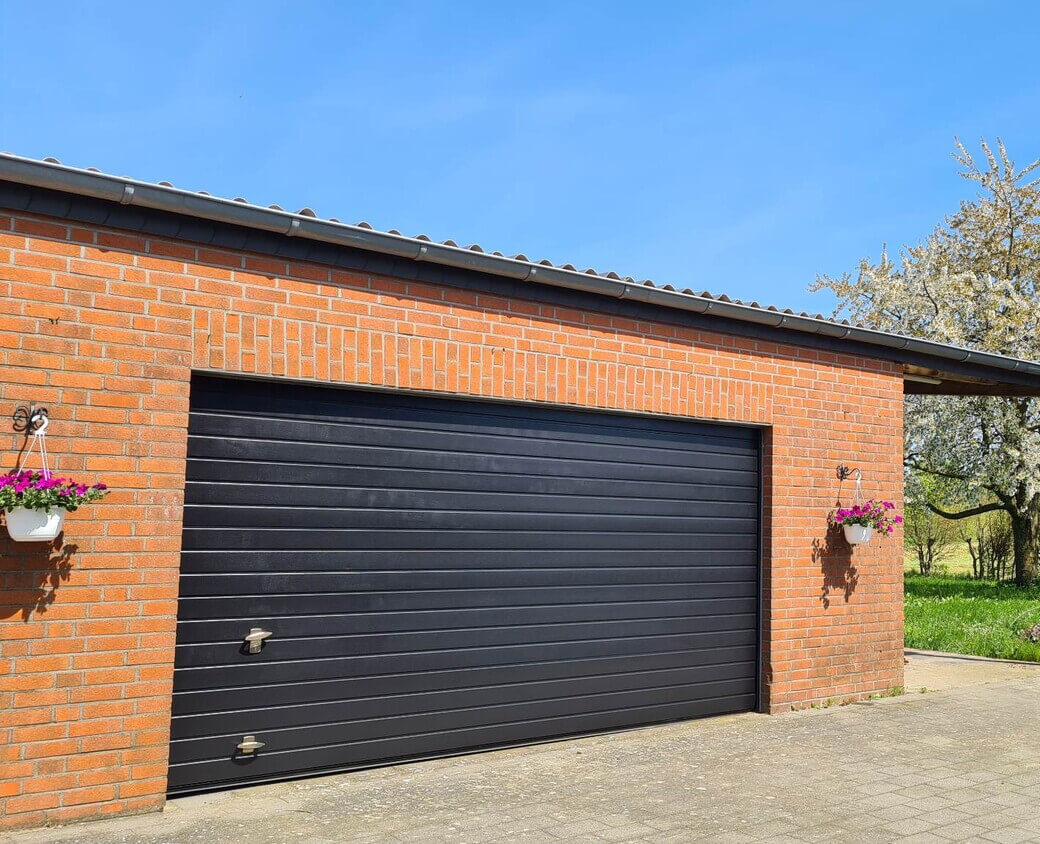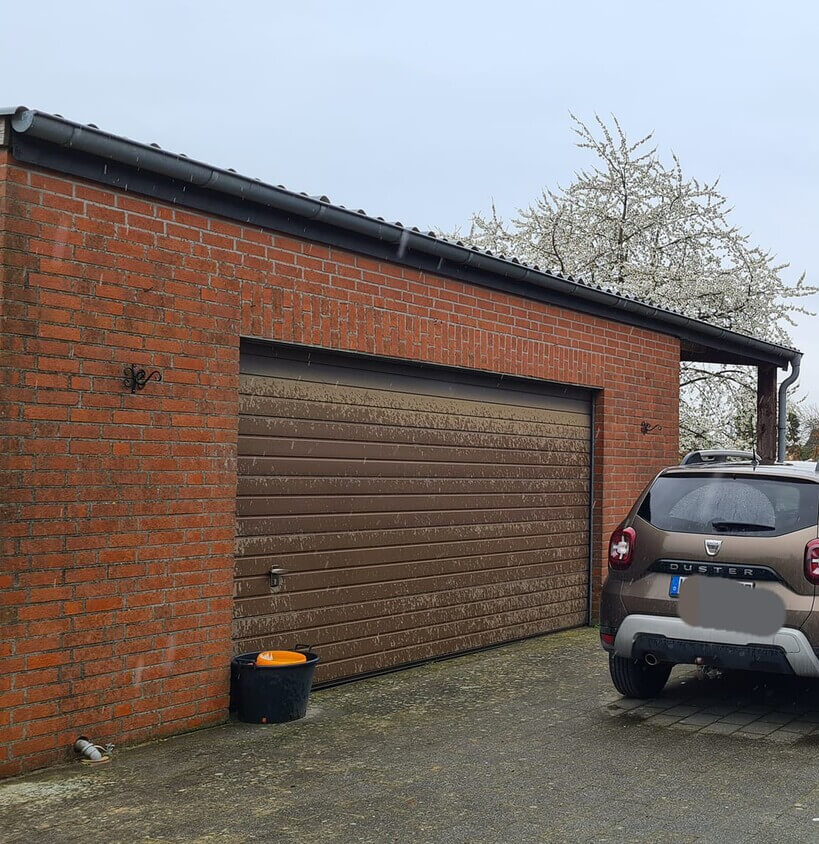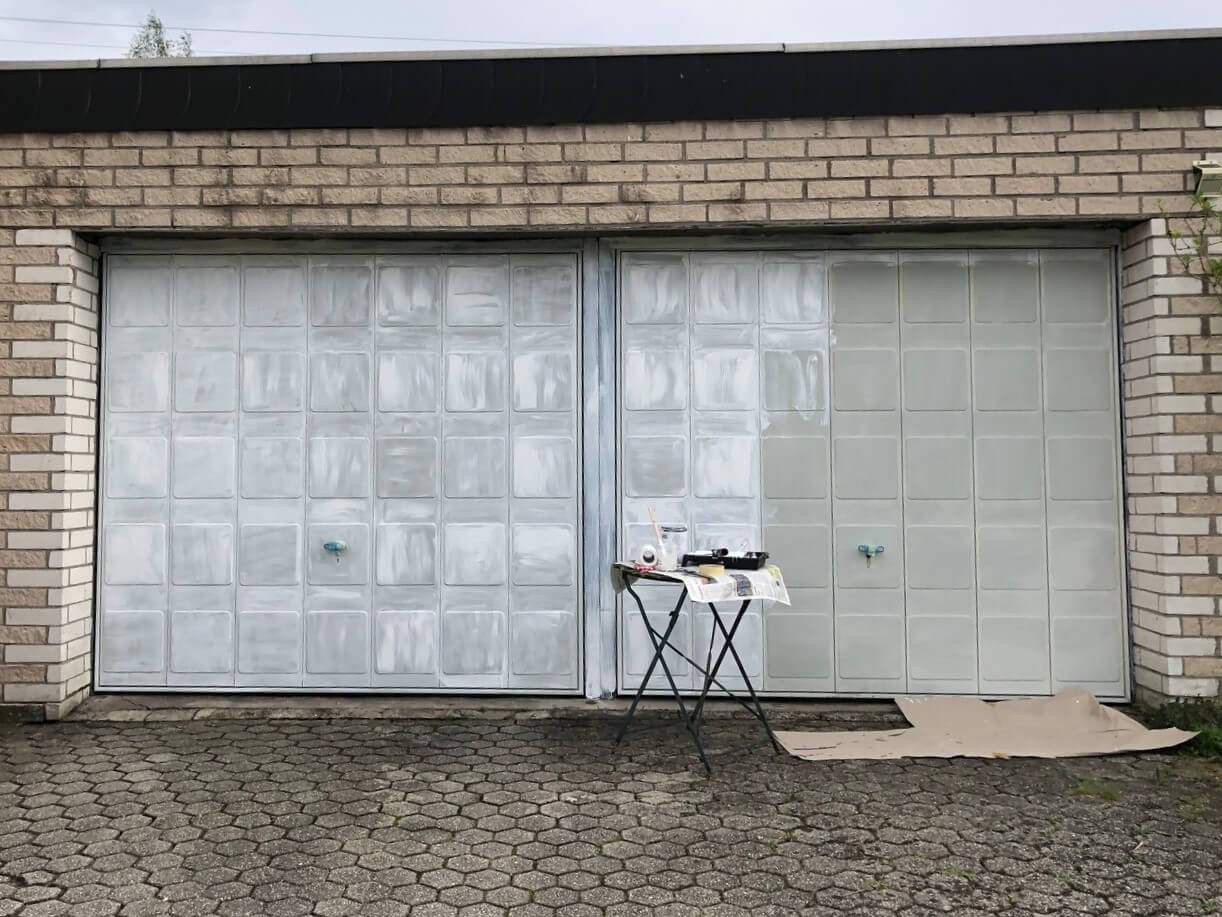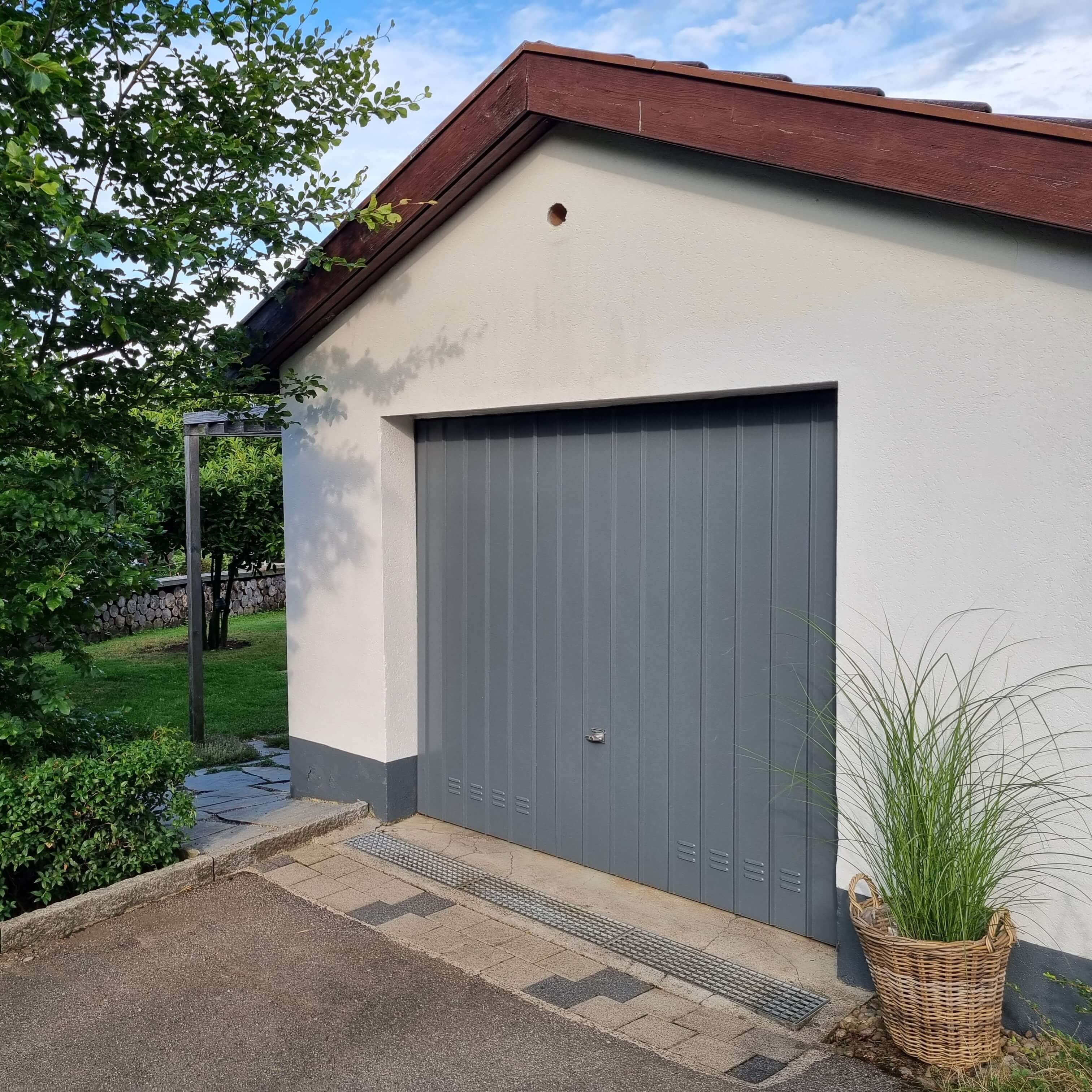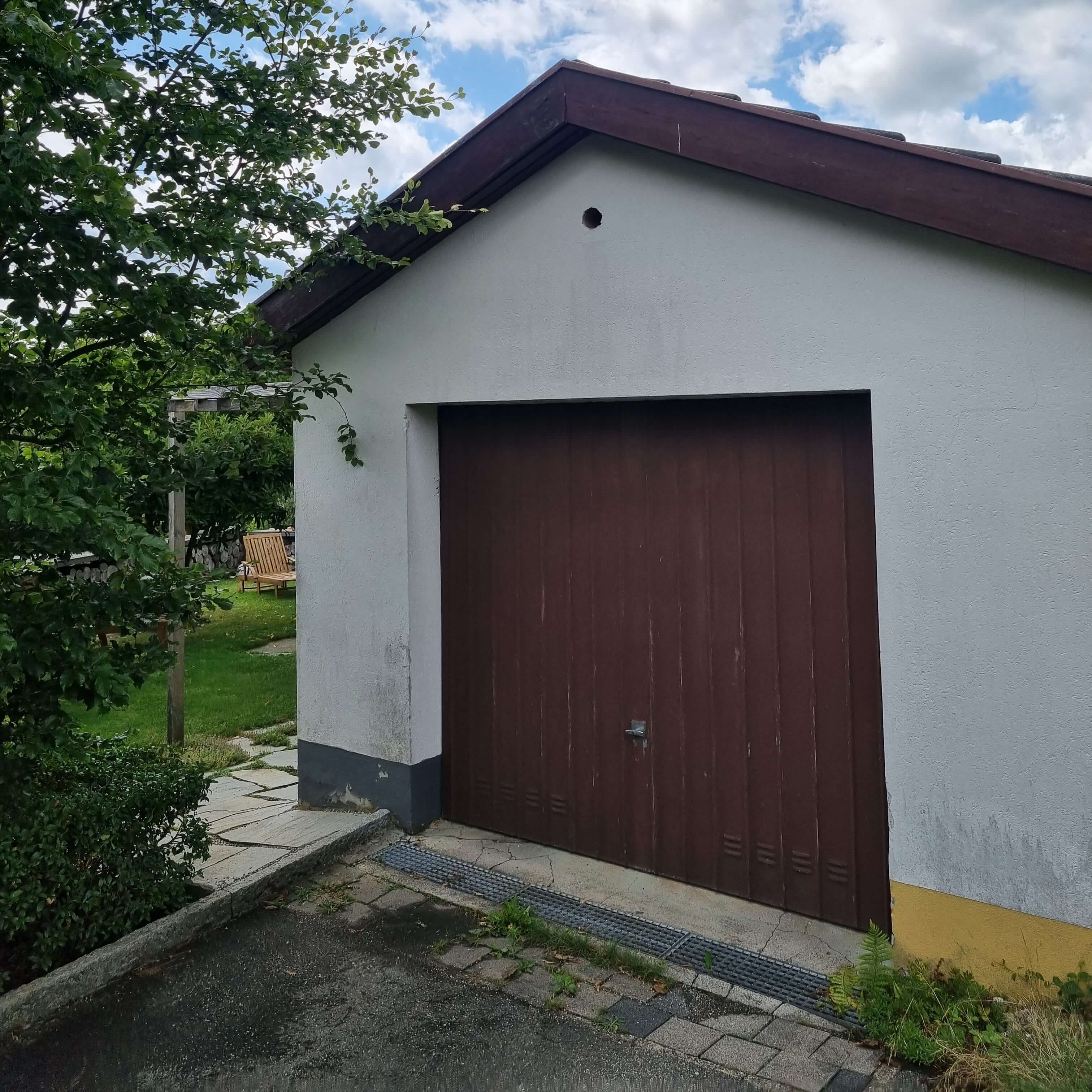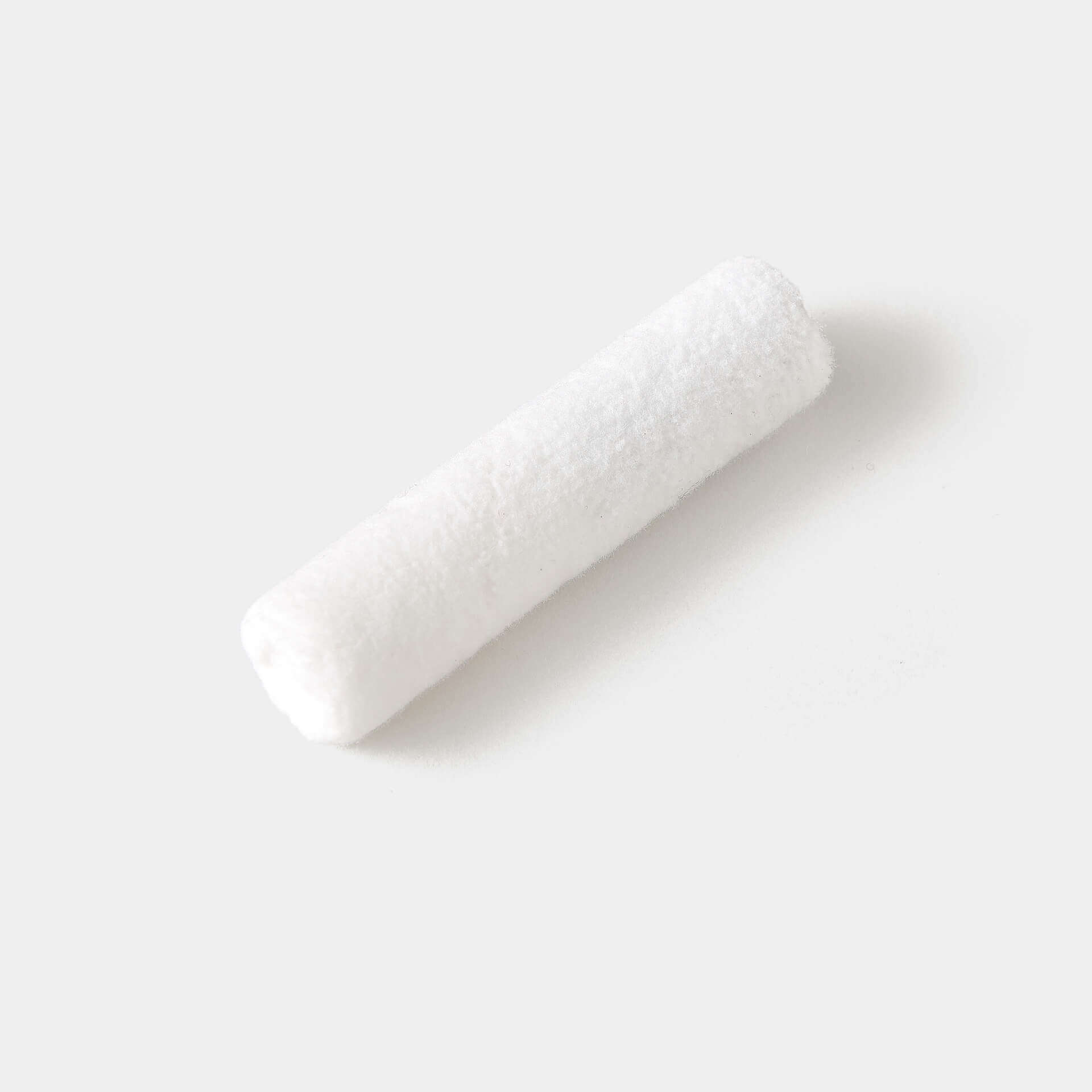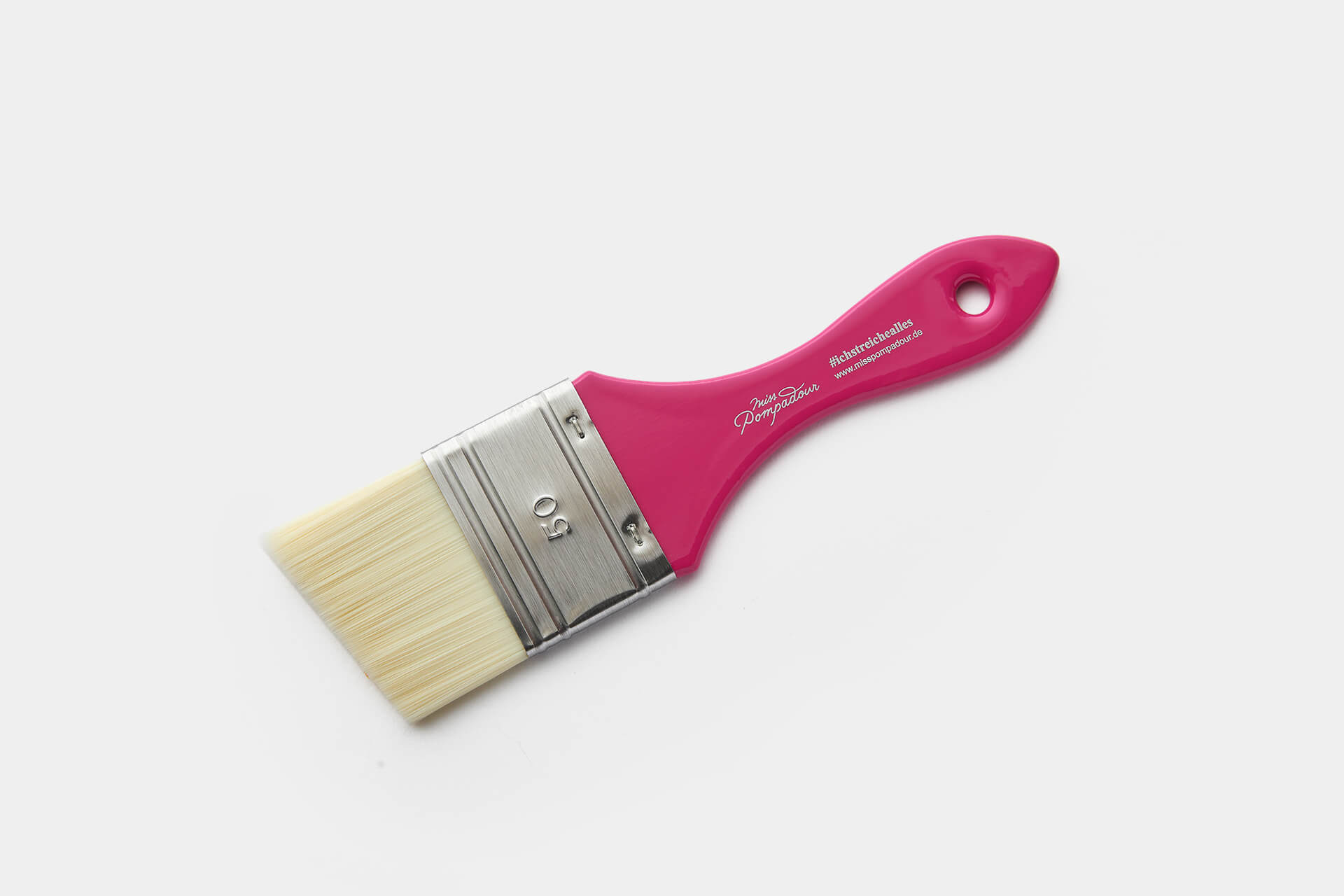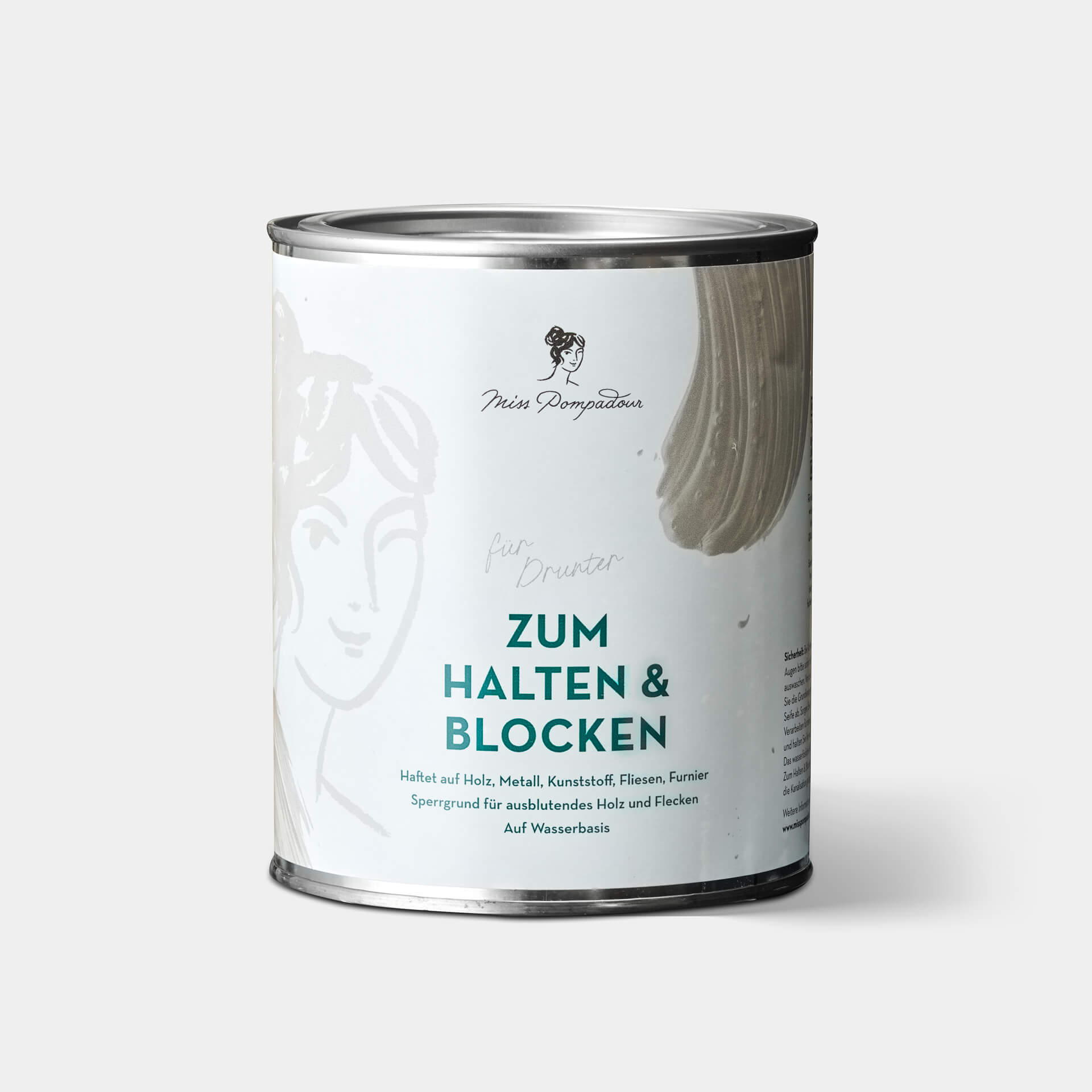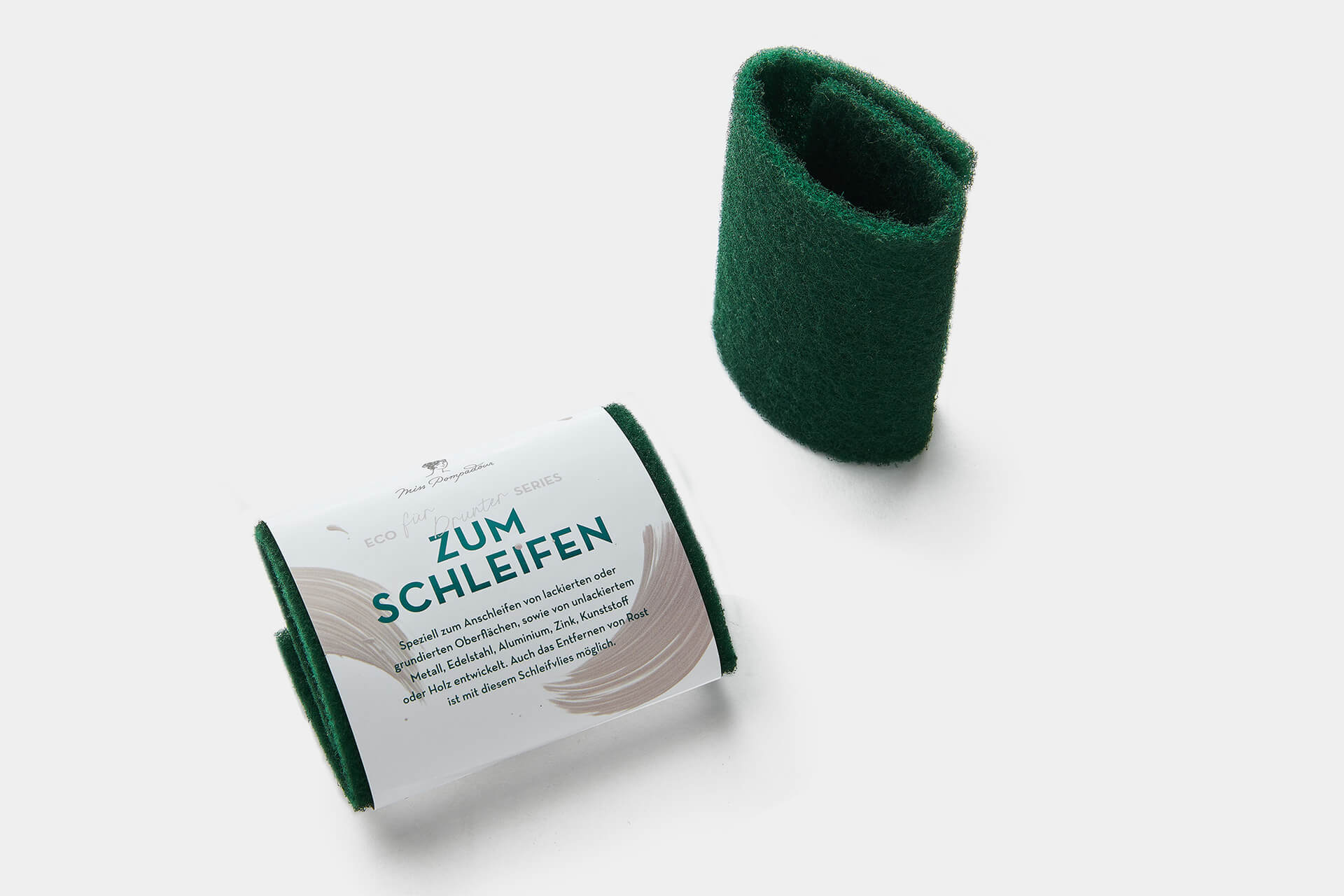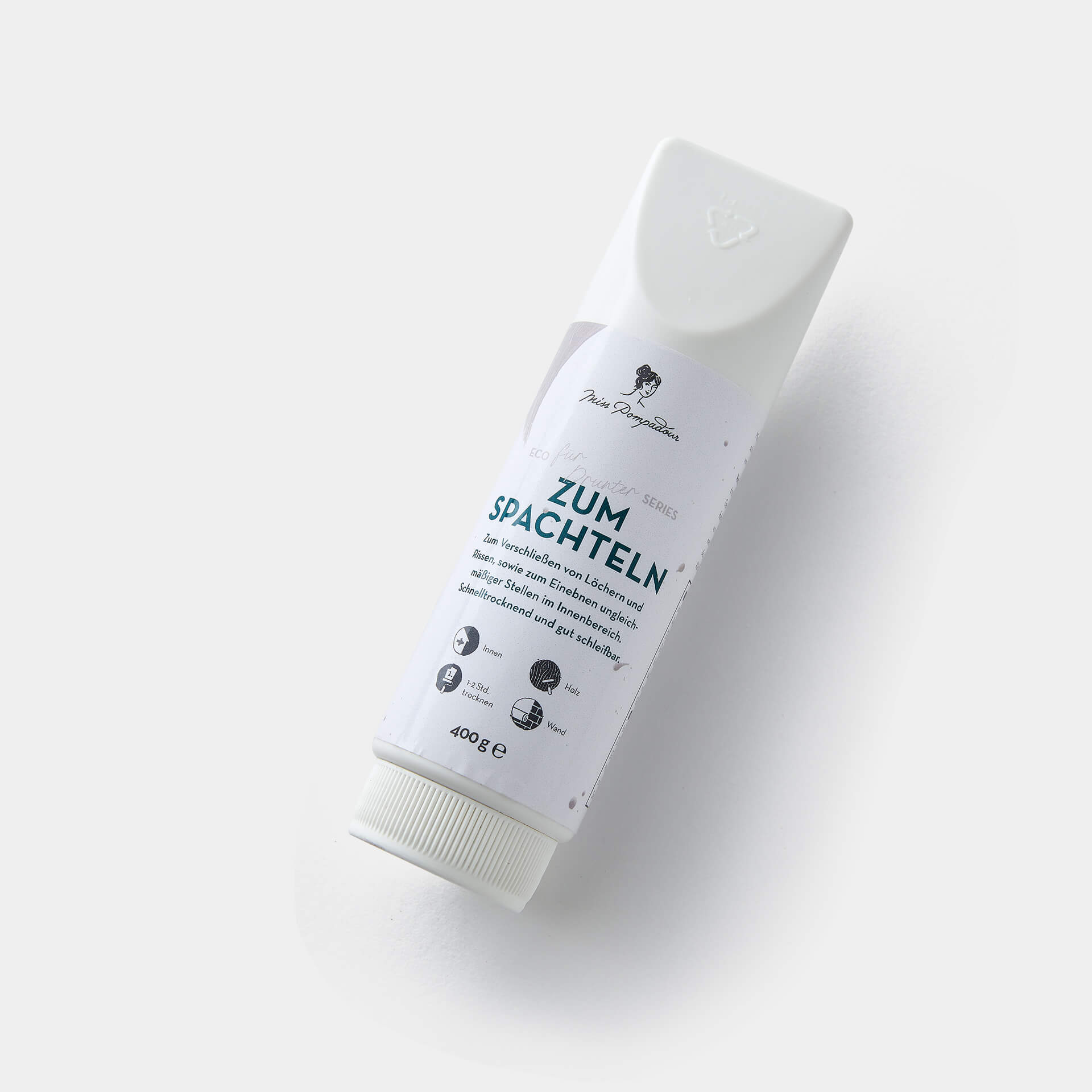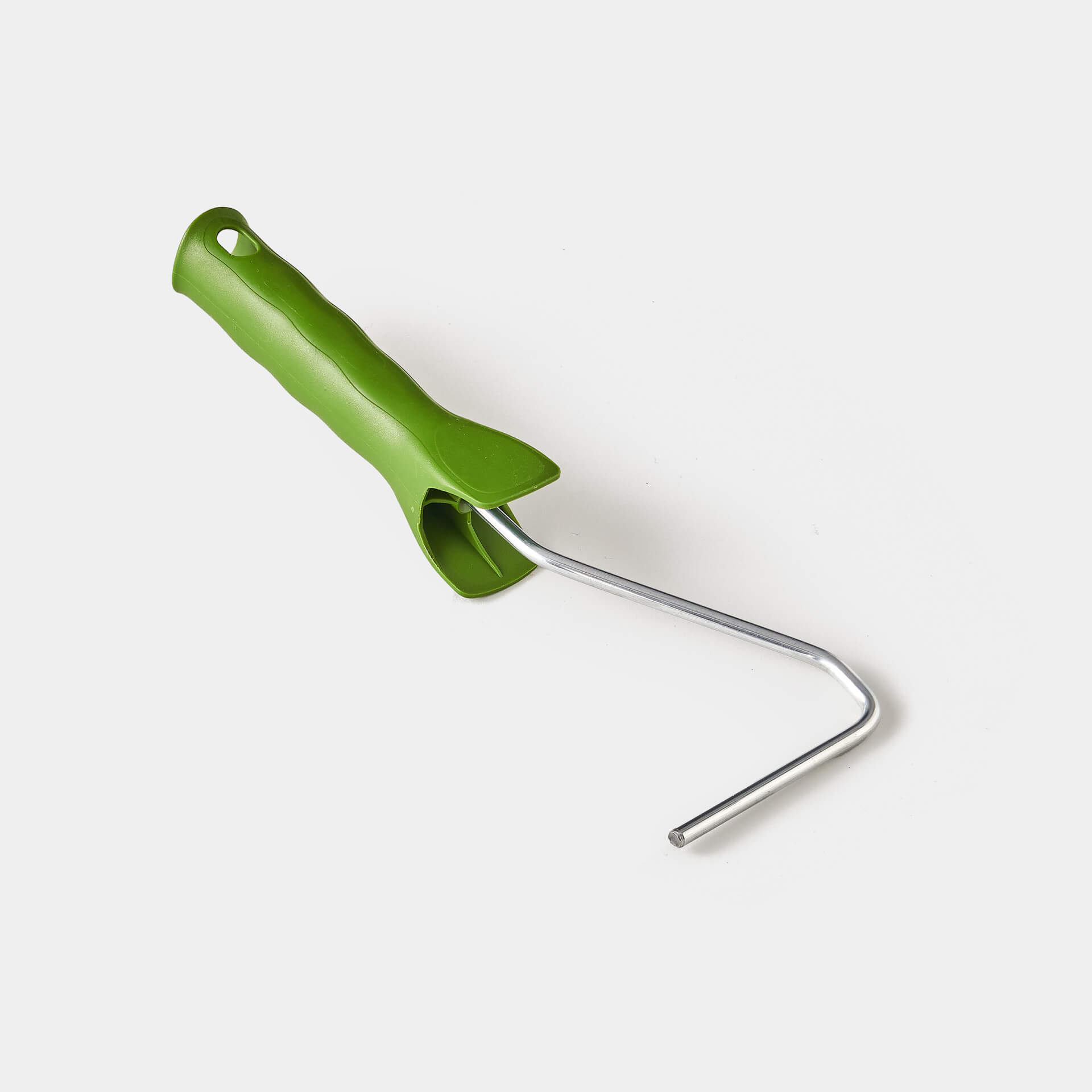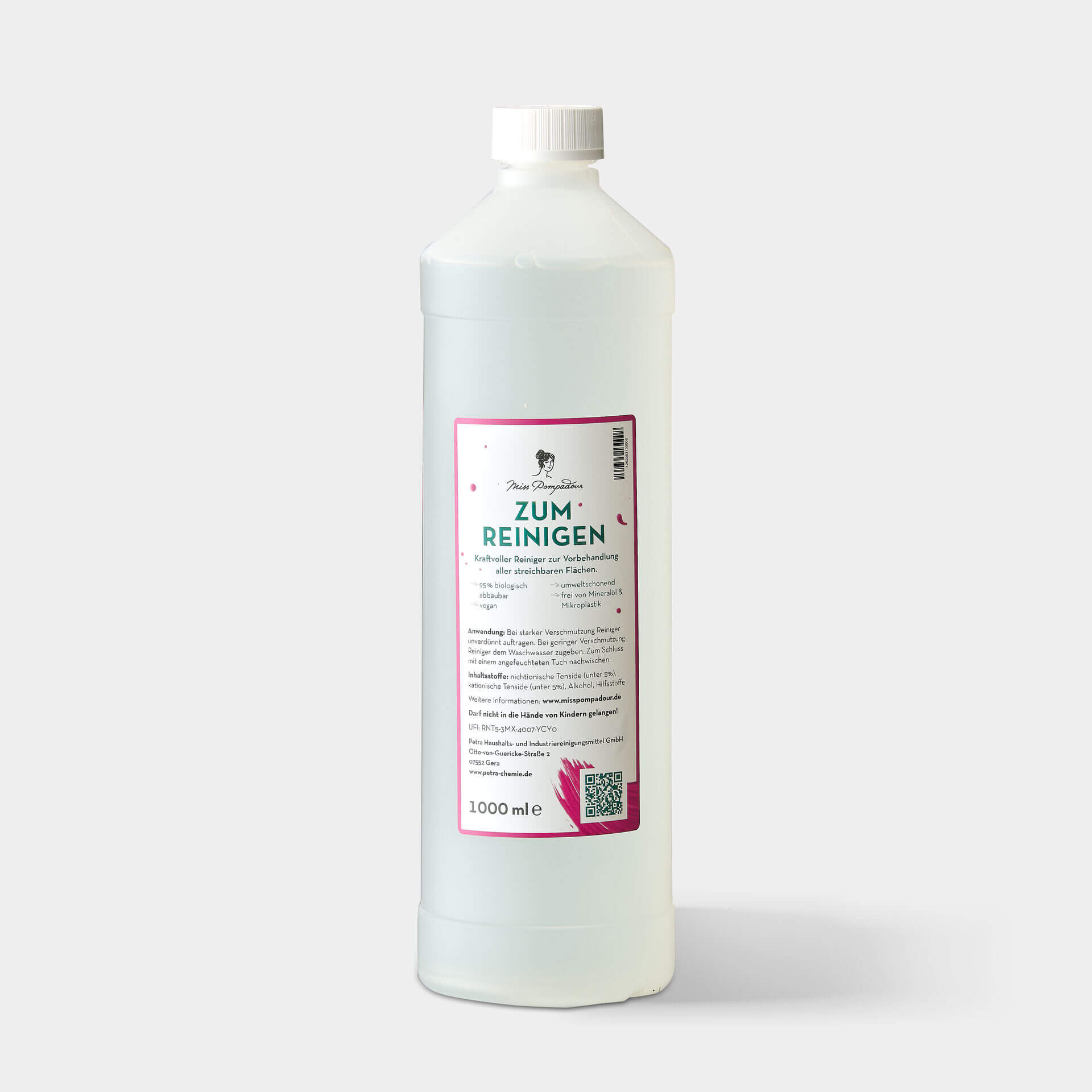Painting Garage Doors: Instruction
In Painting - How-To · 7 min reading time
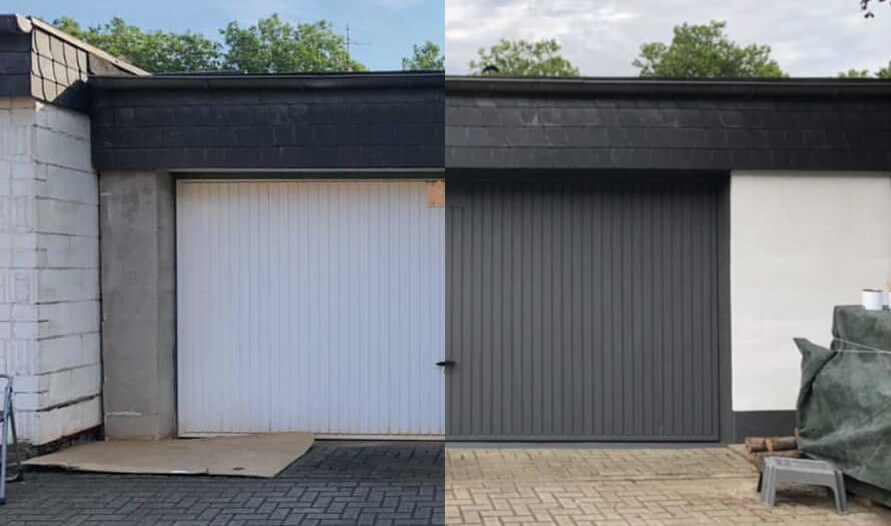
Table of Contents
Ideas for varnishing garage doors from the MissPompadour painting community
Classic or colourful - there are no limits to your imagination and your wishes. For inspiration and ideas to paint your garage door, we have collected some examples from the MissPompadour painting community for you. There you will find even more inspiration
Have you also finished a project and would like to share it with us? Then send it directly to beratung@misspompadour.de or add it to your product review!
Video: MissPompadour suitcase camera -
Annika paints her garage door!
Preparation: How to choose the right colour for the garage door
What type of garage door do you want to paint?
Garage doors differ both in terms of material and structure. In addition to overhead doors, there are also sectional and roller doors. The main difference is that sectional doors usually contain elements made of plastic. Roller doors, on the other hand, are usually made of aluminium. If you want to paint all parts of your garage door, you will need to choose different primers for your mix of materials.
If you want to paint your sectional door, apply the varnish only to the segments. This will prevent the varnish from cracking when the door is raised.
What material is the garage door made of?
First of all - if your garage door is already painted and the varnish is still firm and stable, you can simply repaint it in the colour of your choice without applying a primer first. If, on the other hand, it is still unpainted or the old paint is already peeling off, you should sand it beforehand if necessary and treat it with a primer first.
- Wood: For wooden gates, or for individual wooden parts and especially for untreated wood, use a primer such as MissPompadour To Bond & Block and then a weatherproof varnish.
- Plastic: You are also on the safe side with To Bond & Block for plastic.
- Metal: For metal doors, it is important to remove corrosion damage and apply a suitable primer to protect against rust. Here, first use a rust protection primer and then To Bond & Block.
- Galvanised sheet metal: Painting galvanised sheet metal or zinc sheet is tricky and takes the most time. If the surface is not properly pre-treated, paint and corrosion damage is inevitable. Older galvanised surfaces are unproblematic to paint, freshly galvanised surfaces can only be painted with special paint and primer. So if you want to paint a galvanised garage door, first find out when it was galvanised
- Steel doors: Are also primed and painted with varnish
- Aluminium sheet: Here it is important to know whether it is anodised or non-anodised aluminium. If it is not anodised or already painted, you can simply paint over it. No paint will last on anodised aluminium in the long term.
How should the surface of your garage door look?
The gloss level of our products ranges from matt, silk matt/eggshell to glossy. Depending on which product you choose, the surface will appear either matt or very glossy - depending on how the incident light is reflected by the painted surface.
For outdoor use, we recommend silk matt varnishes, such as our MissPompadour Eggshell Varnish, as they are easier to maintain and apply due to their smooth surface. You will be happy with the result. But of course there are no limits to your wishes and you can also paint in matt or gloss.
Professional tip: A garage door in particular can look very good in high gloss. Note, however, that fingerprints and wear will show up more quickly on high-gloss surfaces, while silk matt is the easiest to clean.
If you want to paint your garage door as well as your front door and wooden gate, you can find the most important tips and tricks for impressing your neighbours in our guide to painting your front door.
Paint the garage door professionally: Instructions from MissPompadour
In the following steps, we'll give you instructions on how to paint your garage door properly. It doesn't matter whether it's made of wood, metal or plastic, or whether you use varnish or outdoor paint.
Step 1: Cleaning and preparation
After a rough surface cleaning of the garage door, you need to remove flaking varnish and also corrosion damage such as rust to make the surface load-bearing.
- Rough cleaning: Clean the garage door of coarse dirt such as dust, moss or cobwebs with a broom, brush or even a squeegee.
- Removal of old varnish and rust: Rust spots and flaking varnish must be removed and possibly sanded with sandpaper. The To Clean - MissPompadour Cleaner is also suitable for creating a grease-free and clean surface. Common household cleaning agents are not recommended for this purpose, as they usually contain grease. Finally, rinse the surface again with clear water and let it dry well.
- Preparation: Now you should unscrew all handles and other accessories or tape off areas that are not to be painted. Cover the floor under the garage door with foil to prevent any unwanted paint damage.
- Repairing irregularities and damage: In this step, you should also repair damage and irregularities, sand down the garage door or fill it with a compound: You can easily conceal dents or holes with To Fill - MissPompadour Filler.
Step 2: Priming
The primer is the first thin coat that is applied to the prepared surface. It has two functions:
- The colour bonds better with the material, the paint becomes more even and lasts longer
- Especially if you want to apply light colours to a dark surface, the primer covers the dark layer and can prevent the wood from bleeding.
- For wood: Play it safe on real wood. The barrier layer prevents tannins in the wood from bleeding and leaving unsightly stains in the fresh colour
- For plastic: If you want to paint a coated garage door, prime with To Bond & Block for a good paintable surface. Apply the primer opaquely and allow it to dry well.
- For metal: Priming is particularly important for raw iron or rusty metal to prevent rust from forming. Sand off existing rust well, prime first with rust protection primer and then with To Bond & Block. For non-ferrous metals and already coated iron without rust, use To Bond & Block straight away.
Pro tip: You should apply the primer really thickly and with good coverage. Allow the primer to soak in for 3 to 8 hours or overnight, depending on the substrate.
Step 3: Repaint the garage door
Now it's time to apply the layers of paint to the dry material. Close the garage door and apply the paint with a brush, paint roller or spray system. If you choose a paint roller, we recommend a varnish roller for water-based varnishes. For brushes, we recommend our bevelled To Paint - MissPompadour brushes.
Always paint from top to bottom to avoid so-called runners (paint drops) or noses. If noses cannot be prevented, sand them off with a fine sandpaper after the drying time and improve the surface.
- How many coats you need to apply depends on your colour preference, the material and the colour. Apply as many coats as you like until you are satisfied with the result.
- Let each coat dry very well. Usually 4 to 5 hours is enough, but it can take longer depending on the environmental conditions.
- The surfaces harden more and more with each day and have reached a very good stability after 10 to 14 days.
FAQ: Frequently Asked Questions About Painting Garage Doors
Paint or spray the garage door?
Whether you use a brush, paint roller or paint spray system to apply the paint depends on the type of garage door, among other things. For roller doors with many individual elements, a spray system can be advantageous - make sure that the intermediate surfaces are well dried before raising the garage door so that the elements do not stick together.
Can I paint a roller shutter?
Of course, you can also beautify your roller shutter with a new coat of paint. However, you should not forget to paint the inner surfaces as well. It is best to roll down the door gradually - this way you can easily reach the intermediate elements.
Can I paint a plastic garage door?
Yes, you can also repaint a plastic garage door. However, a suitable primer is extremely important when painting plastic. With MissPompadour To Bond & Block primer, you can achieve a very durable coating.
Are garage doors galvanised? How can I paint galvanised sheet metal?
Sheet iron garage doors are often galvanised. Galvanising is a metal coating that ensures that the iron does not rust in wind and weather. If you want to paint an old galvanised garage door because it's crying out for new paint, you can simply get started. If you can already see rust spots, you need to remove them thoroughly and prime the bare metal in these areas with rust protection primer and then To Bond & Block before you start varnishing.
You cannot paint freshly galvanised sheet metal without special treatment, so this is more of a job for professionals.
These are the accessories you need for painting the garage door
- Kärcher, broom, wire brush: For rough cleaning before you get down to the real work.
- Sandpaper or Sanding Pad: For all areas where old varnish has flaked off or for other superficial damage to the garage door that should be sanded smooth before painting, you can use our To Sand - MissPompadour Sanding Pad
- Cleaning rag and bucket: Use To Clean - MissPompadour Cleaner to thoroughly clean the garage door first, as the surface must be free of dust and grease in order for your paint to hold well.
- plastic drop cloth or newspaper: To protect the floor against paint splashes.
- To Mask material: To protect parts that are not to be painted - e. g. handles that cannot be removed
- Brush or paint roller: For large areas, our varnish roller for water-based varnishes is definitely suitable. For precise painting, e. g. around handles or hinges, our bevelled To Paint - MissPompadour brush is perfect. With a steady hand, you can even save yourself the trouble of masking off the surfaces
- Paint spray systems are also suitable for large areas - but only for water-based paints and primers.
Colour selection
Tools and accessories
Content: 0.4 Kilogramm (€24.75* / 1 Kilogramm)

